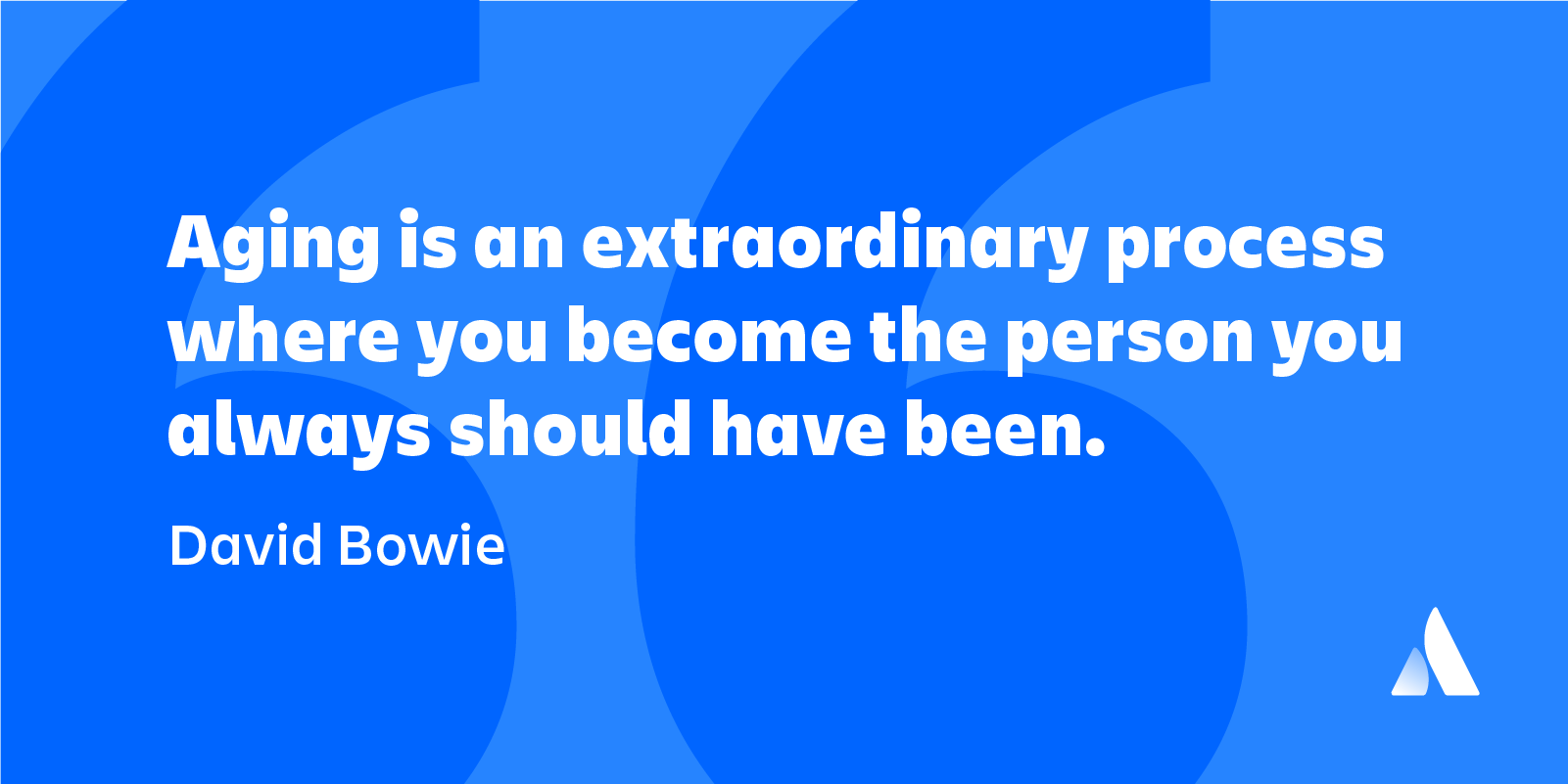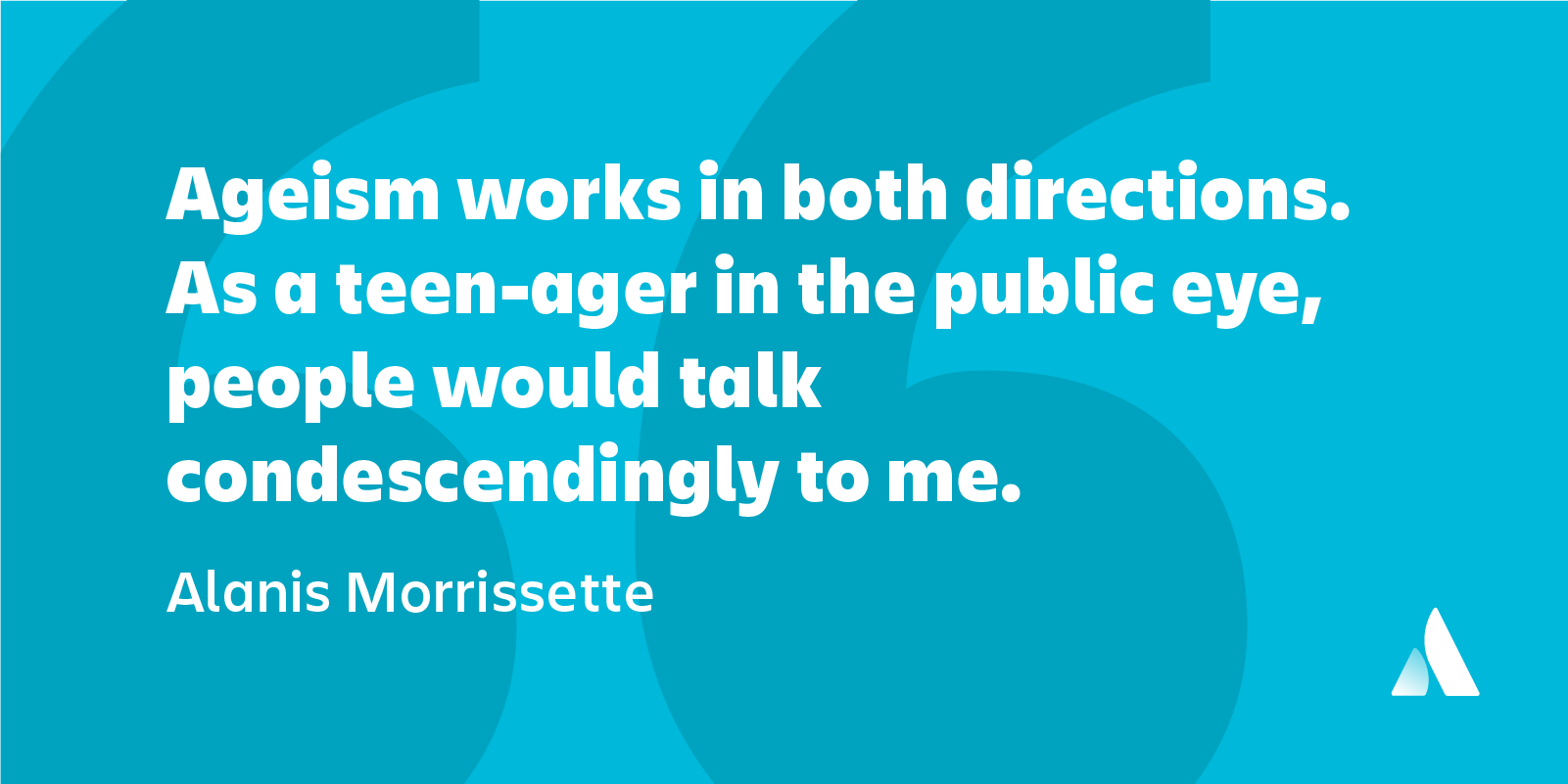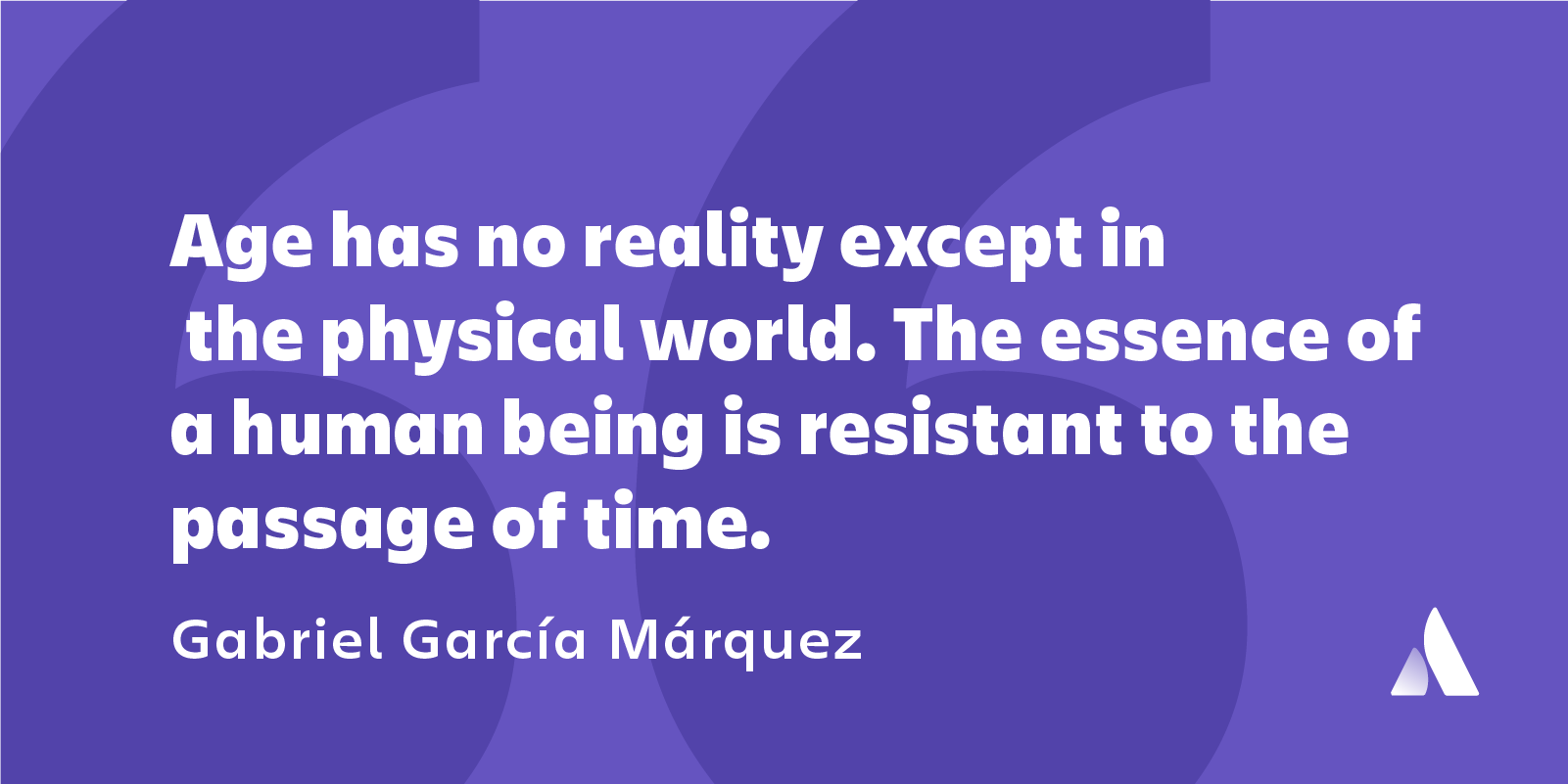Guess what? You’re ageist.
But, so am I. We all are. I know this because we’re ageist against ourselves. I’m willing to bet, no matter how old you are, you’ve been in a group that included people younger than you and said something like: Oh, were you still in high school when that happened? Or, You graduated from college when? Or, Were you even born yet?
As we age, we become increasingly more sheepish about exposing that fact. As if growing older was somehow bad or unfortunate.
Which is odd, since most people report feeling better (soul, if not always body) and more confident as they age.

Here’s the real problem with being ageist, whether toward oneself or others:
Like the racist and the sexist, the ageist rejects an Other based on a perceived difference. But ageism is singular, because it’s directed at a group that at one point wasn’t the Other—and at a group that the ageist will one day, if all goes well, join. – “Why ageism never gets old,” The New Yorker, November 20, 2017
Ageism is the –ism none of us should have because no matter what, with good fortune, we’re all going in one direction. That is, we’re all on our way to… old.
The ageist thus insults his own future self.
Don’t buy into the way #aging is depicted in #advertising. #ageismhttps://t.co/6NL3CVhF04 pic.twitter.com/rqzGfzbm3w
— Ashton Applewhite (@thischairrocks) February 25, 2018
What is ageism, anyway?
The term “ageism” means prejudice or discrimination on the basis of a person’s age, and first appeared in 1969 – two years after the Federal Discrimination in Employment Act set forty as the first time a worker could complain about discrimination based on age.
With medical advances, nutritional discoveries, and numerous other factors, people are living longer than ever. This has pushed the boundaries of who stays in the workforce, and consequently who decides to seek retribution should they feel mistreated based solely on their time on the planet.
Typically, ageism is used to refer to people at the higher end of the age spectrum. But, as the definition indicates, the term can (though uncommon) be applied in the other direction. That is, at young folks. So even though “over 40” is the legally protected class, the all-too-familiar, biting, and usually mean-spirited attitude toward Millennials is ageism of a kind, too. In fact, it could end up being more prevalent than “typical” ageism because of the ever-growing representation of this age group in the workplace.

What can we blame on Millennials now?
Here’s a question: Why do we spend so much time attacking the young? Have you ever thought about that? What’s up with all this Millennial-bashing, anyway? Shouldn’t we have a more encouraging, supportive stance? After all, we were young once, and we suffered the consequent ridicule based on that which we couldn’t control. So what if young people want to challenge the status quo, do things their own way. Isn’t that what they’re supposed to do? It seems like once “Millennials” started taking selfies (with technology older people first developed!) the entire age group was forevermore labeled narcissistic and entitled.
Haven’t we realized that every new generation gets saddled with something? So Millennials don’t work hard and they’re self-centered. Reminds me of what “they” used to say about my generation, us Gen Xers. We, in case you’d forgotten, were the “slacker” generation. We were labeled because we had the audacity to voice our disenchantment with the “system,” and wanted to follow a path to greater creativity and personal fulfillment than, you know, law school. Not to mention the fact that the country was gripped by the recession when we were graduating from college in the early nineties, so there weren’t all that many “good jobs” in the first place.
Sound familiar? And what about the “beats” of the fifties, or the “lost generation” of the twenties? Weren’t they also similarly wayward, disillusioned, idealistic, and ungrateful?

Generational thinking is lazy. It attempts to make history more compact and digestible, to help us understand what is basically too complicated to understand. Time doesn’t work in decades. The “sixties” actually refers to a collection of events that happened mostly from 1965 to 1975. So, now what?
The bigger point is: labels hurt older and younger people. Both groups – and everyone between – have the ability to contribute in creative and industrious ways. Ageism hurts us all, and yet we continue to buy into the stereotypes.
Consider this quote from Atlassian’s Aubrey Blanche, in an interview with The Huffington Post:
The stereotype about who’s successful in tech — namely, younger, white men — affects the way we interact with people who have more experience. It can cause people to think they’re less creative and innovative, though we know that is not true. David Galenson, a researcher at the University of Chicago, showed that younger and older workers are innovative in different ways. In fact, older people tend to be better at solving more complex, deep-rooted problems, because they often have a deeper level of understanding of current systems gained over the course of their careers. It’s when those very different ways of thinking come together, diversity of thought, that teams are able to reach their true potential.
In medicine, an older doctor, which is to say a more experienced one (though not always), is more revered and deferred to than a younger, less experienced doctor. Which stands to reason, right? Performed more surgeries, studied more MRIs, witnessed more recoveries? That doctor knows more! The irony here is, what field is more science-based than medicine? If youth really was a factor, wouldn’t medicine be similar to tech? Yet the medical field doesn’t aggrandize young doctors like the tech field does young software engineers.
Young geniuses and old masters
Consider this: in a study of painters, researchers discovered very different life cycles for the great artists: some made their greatest contributions very early in their careers (supporting the young genius idea), but several others produced their best work late in their lives.
The study revealed, “These two patterns have been associated with different working methods, as art’s young geniuses have worked deductively to make conceptual innovations, while its old masters have worked inductively, to innovate experimentally.”
In other words, while there may be some connection with age and a certain type of thinking, innovation also has to do with method. Conceptual innovators, like Picasso and Johns, are different from experimental innovators like Michelangelo, Rembrandt, and Pollock. But either method is innovative.

The takeaway is this: innovation is varied and complicated. The source of its wellspring is mysterious. We should place everything that informs and inspires innovation, all its forms and requirements, on equal footing, and not limit ourselves and our thinking to one “superior” type. In fact, the source of genius is so unknowable, there’s actually no verifiable correlation between age and “revolutionary” discovery.
It is far more apt to think of these freakish specimen as though they fall out of the sky rather than emerge from any predictable feature of human behavior. By definition, they are different from us in almost every way.” – New Republic, “The Brutal Ageism of Tech“
Ageism in technology and its impact on teamwork
Research reveals, again and again, that diversity on teams – that is, age and sex and background diversity – greatly benefits a team’s ability to innovate.
But, as Atlassian’s 2018 State of Diversity and Inclusion in U.S. Tech report reveals, age ranked lower than race and gender in terms of the perceived need for change. In other words, according to the survey, Silicon Valley companies recognize a need to improve on gender and race, but not age. Plus, nearly 60% of tech workers in the U.S. say their company needs no improvement on age diversity.
We know that diverse workplaces aren’t just better places to work, they work better. And, just like race and gender, age is a criterion for diversity. If we don’t want access to opportunity to be determined by what we look like, wrinkles and gray hair count. – Ashton ApplewhiteDespite “diversity fatigue” there’s really no question about the value of diversity and what it adds to teams. But it’s absolutely essential to create a culture within which teams can realize the value of diversity — all sorts of diversity.
In this SFGate article, Fay Cobb Payton, an information systems professor at North Carolina State University, says “Seeing is very important in the tech space: seeing people and working with people who may be older or more seasoned, seeing people who are black, Hispanic, female. That’s all important.”
That alone is worth a closer look at your team’s makeup and calling into question the practices and assumptions of your organization’s policies regarding diversity and inclusion.
Don’t let ageism ruin your team’s chance for greatness
We’re in control of how we treat each other. We can decide how we relate to teammates and how we build our teams. Ageism, in any direction, might be hard to shake, but to the extent that we consciously let it linger and pervade our attitudes and decisions, we’re losing. If we stoop to calling the token graybeard “Grandpa Buzz” (see this article), effectively ostracizing him from the group, we’re losing. If we keep repeating put-downs about Millennials and their social media use, we’re losing. (Not to mention that according to Facebook IQ Millennials will make up one-half of the global workforce by 2020, so it’s in everyone’s best interests to be lovers and not fighters in this regard.)
Prejudice is prejudice, and it always weakens us—as a society, and as groups of people organized in teams. If we buy into stereotypes about age (old or young), and dismiss the experience, insights, and contributions of people based on assumptions, our teams will never be as good as they can be.
Want more great quotes? Click the big green button below.








































